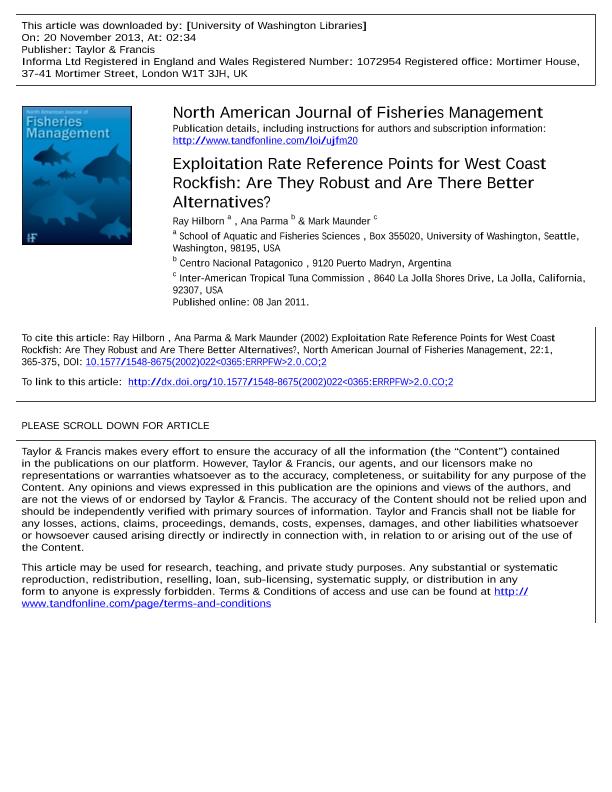Artículo
Exploitation Rate Reference Points for West Coast Rockfish: Are They Robust and Are There Better Alternatives?
Fecha de publicación:
02/2002
Editorial:
American Fisheries Society
Revista:
North American Journal Of Fisheries Management
ISSN:
0275-5947
Idioma:
Inglés
Tipo de recurso:
Artículo publicado
Clasificación temática:
Resumen
We explore several aspects of the robustness of exploitation rate reference points as a management tool. The spawner- recruit curve is an important consideration when developing exploitation rate reference points. The spawner-recruit curves for West Coast rockfish Sebastes spp. suggest low productivity compared with other tocks, but our ability to produce reliable estimates of productivity is hindered by the scarcity of reliable, fishery-independent surveys, the short time span of the data, high aging error, and the low exploitation levels. Implementation of reference exploitation rates usually assumes that we can estimate the absolute stock size and the ratio of current to virgin stock size. We show that management by reference exploitation rates is not robust to overestimation of stock size; in such cases, overexploited stocks will continue to be overexploited. We also show that if F55% exploitation rates (i.e., rates that reduce the spawning potential per recruit to 55% of its value in the unfished state) are used and productivity for an individual stock is comparable to that for other stocks around the world, we would unnecessarily impose catch reductions. We evaluate a management policy that seeks to maintain healthy stocks at or near current levels regardless of the absolute abundance, and we show that such a policy produces desirable results both when the stock size is overestimated and when stock productivity is underestimated. For stocks that are judged to be in need of rebuilding, current management policies seek to reduce catch to very low levels regardless of the reference point.
Palabras clave:
FISHERIES REFERENCE POINTS
,
ROCKFISH
Archivos asociados
Licencia
Identificadores
Colecciones
Articulos(CCT-CENPAT)
Articulos de CTRO.CIENTIFICO TECNOL.CONICET - CENPAT
Articulos de CTRO.CIENTIFICO TECNOL.CONICET - CENPAT
Citación
Hilborn, Ray; Parma, Ana María; Maunder, Mark; Exploitation Rate Reference Points for West Coast Rockfish: Are They Robust and Are There Better Alternatives?; American Fisheries Society; North American Journal Of Fisheries Management; 22; 1; 2-2002; 365-375
Compartir
Altmétricas




